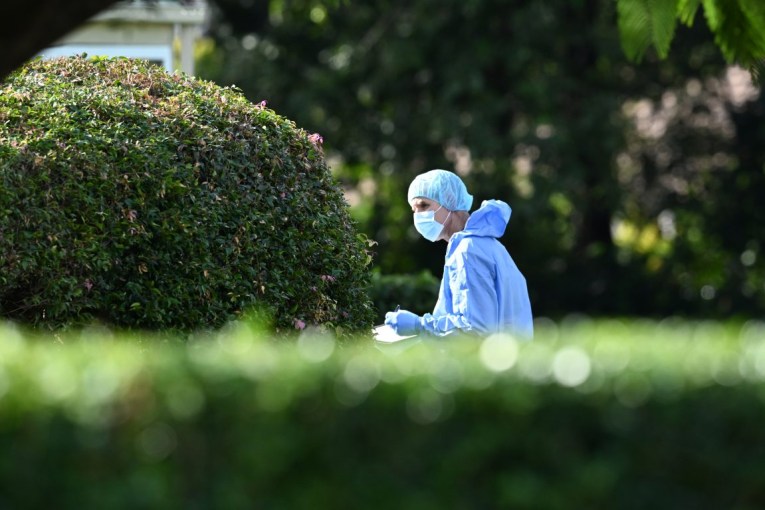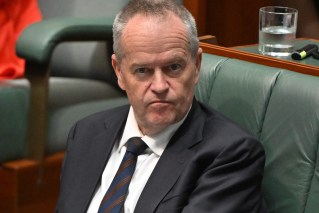Sick to death: AMA report says our hospitals in ‘unending cycle of crisis’
Public hospitals are caught in an unending cycle of crisis caused by a funding formula which has failed to arrest a decline in performance over a decade, the Australian Medical Association says in a new report.

The state government has moved to support women with endometriosis. (File image - Australian Nursing and Midwifery Journal)
“Our hospitals are full – there simply aren’t enough hospital beds or enough doctors and nurses – and tragic stories of deaths, deterioration and delayed care are becoming increasingly commonplace,” the report says.
The AMA report, “Public hospitals: Cycle of crisis”, was released on Friday and says a shortage of hospital beds, overcrowded emergency departments and longer waits for elective surgery are “risking the lives of all Australians”.
It warns of dire consequences if all governments fail to act and says the hospital crisis was in full swing long before COVID-19 arrived.
“Hospital beds will increasingly be taken up by emergency admissions, doubling as a percentage of hospital beds by 2030-31, resulting in even longer waits for elective surgery such as cancer diagnostic procedures,” the report says.
It says the funding arrangements underpinning the hospital system are not fit for purpose and fail to meet the demands of a growing and ageing population.
“The way to break free from the cycles of crisis is to change the way hospitals are funded – moving beyond just the focus on activity and volume to a partnership based on community demand and timeliness of treatment.”
The report landed as Queensland’s Liberal National Party publicly released more than 640 pages of documents to highlight well-known capacity problems in the state’s public hospitals.
The state has been facing an unprecedented capacity crisis in recent years with soaring presentations, rampant ambulance ramping and dozens of code yellows, where hospitals start to run out of beds and ambulances and must divert patients to other facilities.
The crisis is particularly concerning for the health system as the state models a way to reopen the borders to COVID-19 in coming months.
AMA president Omar Khorshid said the report had been sent to the prime minister and every state and territory leader as its findings required immediate action.
“Australians expect to receive treatment when they need it. They expect an ambulance to turn up when they call one, and they expect to be able to get into the hospital when they arrive,” he said in a statement.
“At the moment, these expectations can’t be met and that is a symptom of a public hospital system in crisis.”
Dr Khorshid said repurposing resources in a constrained system by stopping one type of healthcare in favour of another will only lock the system into further cycles of crisis.
“We need a national partnership approach where federal and state and territory governments work together to implement structural reform to focus on public hospitals seeing people on time and providing quality care.”
Dr Khorshid said the report puts forward a four-point plan of targeted reforms for additional funding to stem the crisis in public hospitals, funded through a new partnership between the Commonwealth and states and territories.
LNP leader David Crisafulli has continually called for the state to publish real-time hospital data, like other states, but the government has refused.
He has publicly released 645 pages of Queensland Health documents obtained under Right To Information outlining some of the problems, which he accuses the government of trying to keep hidden.
Mr Crisafulli says the documents show patients needing critical care waiting for hours for treatment, a lack of ambulances to respond to late-night calls, staff shortages and state hospitals being classified as “struggling” and “overwhelmed”.
“There is nowhere to hide,” Mr Crisafulli said on Friday.
“The state government doesn’t want Queenslanders to see this, but we won’t stop fighting for the truth. Queenslanders deserve to know the truth about the Queensland Health crisis.
“We’ve put solutions on the table including more beds, better triage, releasing real-time data and giving power back to the frontline staff to make better decisions to improve patient care.
“It’s time for the premier and the government she leads, to start listening.”
Premier Annastacia Palaszczuk has previously said capacity problems are not unique to Queensland and every state and territory wrote to the federal government earlier this year seeking more hospital funding to deal with it.
Earlier this month it was reported that in September, 31 code yellows were issued for hospitals across the state.
Public hospitals have 393 staffed intensive care unit beds, with the capacity to expand to 567 beds and 1355 ventilators available.
There are also more than 300 negative pressure rooms or equivalent to treat patients with infectious diseases, a figure that has increased about 20 per cent since the start of the pandemic.
State Auditor-General Brendan Worrall reported in mid-September that that Queensland Health was failing to meet its own emergency department waiting time targets.
The government target is to keep emergency length of stay (ELOS) times – the period between entering an ED and being admitted or discharged – to four hours for 90 per cent of patients.
“Statewide ELOS performance for admitted and discharged patients has gradually declined, while the number of presentations has increased,” the report said.
Queensland Health has also failed to hit its target for patient off stretcher times (or POST) – the time it takes to transfer people from ambulance care to emergency departments – to 30 minutes for 90 per cent of patients.
POST performance had steadily fallen from 85.9 per cent in 2014/15 to 68.5 per cent between July 2020 and February 2021.
The auditor-general said only one of the state’s top 26 hospitals was hitting the department’s ELOS and POST targets.












